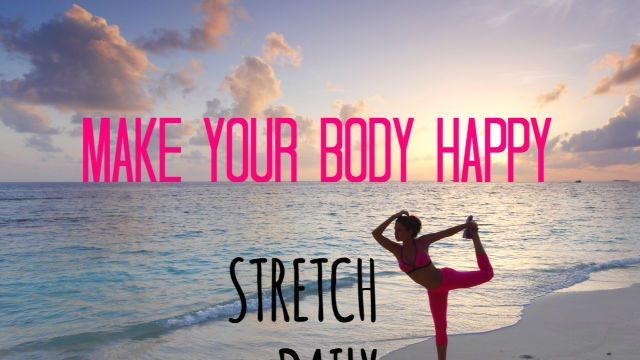
Some of us may think that increasing our flexibility is less important when it comes to physical fitness than aerobic exercise and strengthening our muscles.
After all, only athletes and people performing intense physical training regimens really need to stretch on a regular basis, right?
Wrong. David Geier, the director of sports medicine at the Medical University of South Carolina, says, “flexibility is the third pillar of fitness, next to cardiovascular conditioning and strength training.” To live an overall healthy life, all three of these ‘pillars’ are crucial. They also naturally compliment each other.
If you do not take the time to stretch, especially as you get older, the range of motion of your joints decreases, and muscles can become tight and increasingly rigid. This can eventually greatly impair your ability to perform even normal daily activities. Additionally, if you perform aerobic exercise without stretching, you increase your risk of developing muscle pain, knots and strains.
Margot Miller, a physical therapist and spokesperson for the American Physical Therapy Association, states, “even if you’re aerobically fit, it helps to be limber, too, so your body can easily adapt to physical stressors.”
If your muscles are rigid and your joints are locked, you greatly increase your chances of sustaining an injury, even during less intense forms of exercise, or even possibly during activities such as yardwork or picking something up off of the floor.
Some research shows that stretching regularly and maintaining flexibility throughout your life can help to prevent chronic conditions such as arthritis, diabetes and kidney disease. This is due to the fact that stretching improves the circulation of blood to your muscles, and throughout your entire body.
Maintaining the optimal flexibility for your body is as simple as making stretching a regular part of your exercise routine – just remember to warm up first! Stretching cold muscles increases your chance of pulls and strains.
The ideal order is to do a bit of warm-up aerobic exercise before you stretch, and then do the main part of your workout. Activities such as yoga and pilates can also do wonders for your flexibility, as well as for balance, mental focus and overall health.
Dr. Allen M. Wilkins of Manhattan Physical Medicine offers a few simple rules for stretching. He says to never stretch a muscle to the point of pain, as this can cause damage, to breathe while stretching, and to never, ever bounce a muscle. You should always elongate a muscle slowly, stopping before it starts to hurt, and relax it slowly – no jerky motions.
For people who are naturally very flexible, or hyperflexible, Dr. Wilkins offers a word of caution not to overstretch past the point of your range of motion, as this can cause strains, or in worse cases, joint dislocation. Remember to listen to your body and not to push yourself too far, even if you are just inches away from being able to do the splits! The injuries that can occur are not worth the feat.
When thinking about flexibility, it is important to note the immense benefits of mental flexibility, as well. Keeping an open mind throughout your life, and continuing to learn new things every day, is crucial to both our enjoyment of life and to our cognitive health.
 While we all have certain principles we will not compromise on, much of life is fluid, and our mindsets need to be constantly adjusted to align with changing circumstances. An overly rigid mind can be just as detrimental as an overly rigid muscle!
While we all have certain principles we will not compromise on, much of life is fluid, and our mindsets need to be constantly adjusted to align with changing circumstances. An overly rigid mind can be just as detrimental as an overly rigid muscle!
-The Alternative Daily
Sources:
http://www.huffingtonpost.com/allen-n-wilkens-md/muscle-type-influence-flexibility_b_906631.html
http://www.realsimple.com/health/fitness-exercise/stretching-yoga/increase-flexibility-improve-life-00000000037981
http://www.huffingtonpost.com/2013/10/28/body-on-yoga_n_4109595.html

